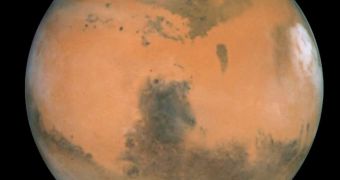As NASA prepares to land astronauts on the surface of Mars by 2035, the agency still has a lot of objectives and studies to complete and perform. One challenge is feeding astronauts for prolonged periods of time, and a new, long-term simulation of how this can be done has just gotten underway.
Hosted by experts at the University of Hawaii in Manoa and the Cornell University, in Ithaca, New York, the mission is entitled the Hawaii Space Exploration Analog and Simulation (HI-SEAS), and has already attracted more than 700 applications.
Of these, six participants were recently selected. They will form a simulated Mars-bound mission, and their purpose will be to develop new forms of food and preparation technologies, which could potentially be applied during deep-space travel.
Using current technologies, a round-way trip to Mars would take at least one-and-a-half years, NASA believes. During this time, six or seven astronauts cannot be fed properly exclusively through pre-packed rations. They would benefit from a varied menu, but there's only so much a capsule can carry.
It is the purpose of HI-SEAS to ensure that meals are both flavorful and nourishing. The six people who are currently making up the simulations crew are the ones that were left in the competition following an intense first phase of testing and training, held last month.
Nine individuals reached that stage of the contest, and the three who were not accepted as part of the main crew will make up a reserve crew. In early 2013, the six individuals will be taken on a barren lava field in Hawaii, where they will have to learn to live in isolation for about four months.
The six participants include US Geological Survey (USGS) Astrogeology Department research space scientist Oleg Abramov and Carnegie Mellon University Robotics Institute expert Simon Engler.
The other four participants are Kate Greene, a science and technology journalist, South Mountain Community College geology professor Sian Proctor, materials scientist Yajaira Sierra-Sastre, and space researcher and biologist Angelo Vermeulen.
“It was very difficult to narrow the pool down. We had about 150 highly qualified applicants, and pretty much everyone we interviewed would have done very well in the habitat,” says Kim Binsted, quoted by Astrobiology Magazine.
“We ended up with a fantastic crew, including the reserve crew, who are ready to step in if someone on the prime crew has to leave the study for some reason,” adds the expert, an UHA associate professor of information and computer sciences, and also a study team member.
This type of study is very important, primarily because of the risk of astronauts developing so-called menu fatigue. When this occurs, they stop eating the things that they like, and eat less overall. This makes them more likely to become malnourished, to experience bone loss, and so on.

 14 DAY TRIAL //
14 DAY TRIAL //